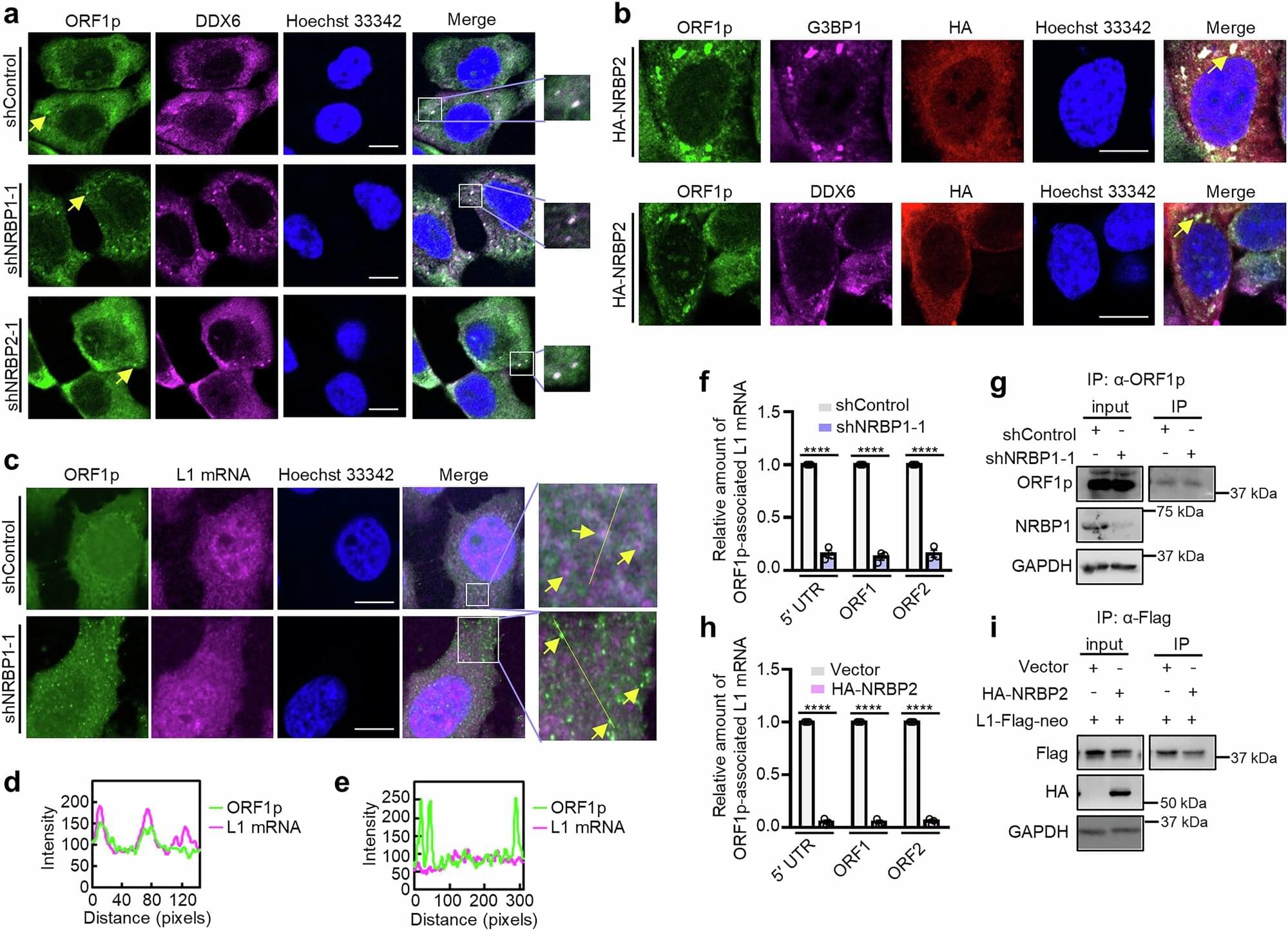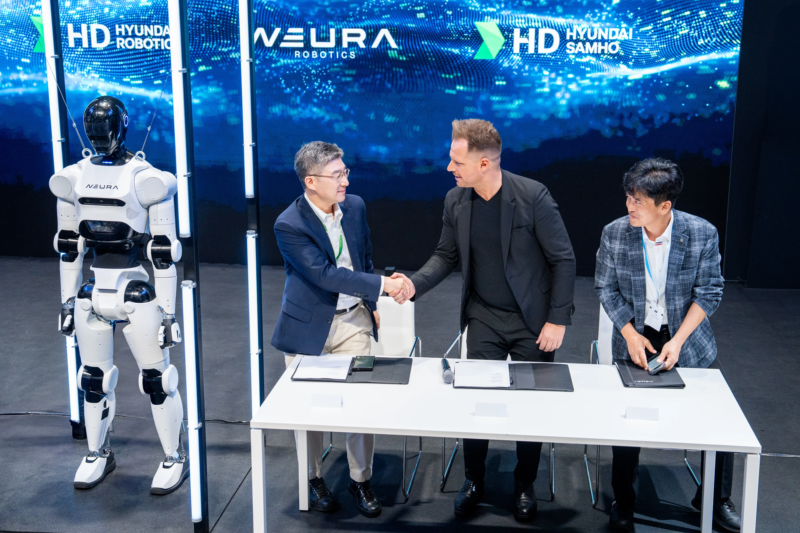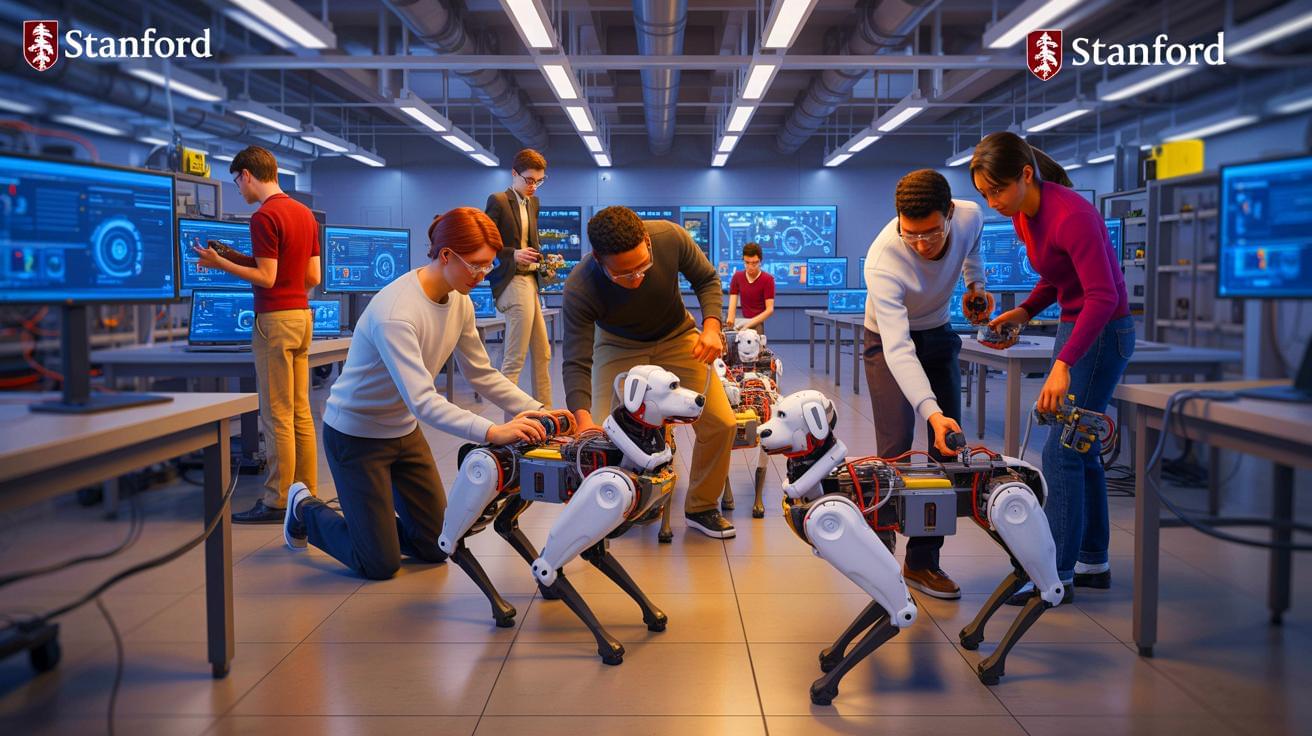What happens when you mix the tiniest molecule on Earth with your water bottle? Maybe… more than you’d expect.



An international research team has deciphered a mechanism of the evolutionary arms race in human cells. The findings provide insights into how mobile elements in DNA hijack cellular functions—and how cells can defend themselves against this in order to prevent conditions such as tumor formation or chronic inflammation.
An international research team led by Freiburg biologists Dr. Wenjing Qi and Prof. Ralf Baumeister has discovered how the LINE1 retrotransposon exploits a cell protein to become active itself, as occurs in tumors. At the same time, the researchers have also deciphered the cell’s appropriate countermeasures to prevent conditions such as tumor formation or chronic inflammation. The results have been published in the journal Nature Communications.


Two units of South Korean shipbuilding conglomerate HD Hyundai have signed a strategic partnership agreement with Germany’s NEURA Robotics to develop specialized humane-like welding robots for the shipbuilding industry.
The agreement, signed in Munich at the end of June, focuses on developing robots capable of navigating the complex environment of shipyards while performing precision welding tasks, aiming to address growing labor shortages while boosting safety and productivity.
Under the terms of the agreement, HD Hyundai Samho will provide testing environments and validate the robots’ practical applicability based on their experience with collaborative robots and automation equipment. HD Hyundai Robotics will contribute technical expertise, including path learning data from years of welding automation experience. NEURA Robotics will leverage its cognitive robotics technology, including its humanoid platform 4NE-1, to develop solutions specifically for shipbuilding applications.

Daniel Kleppner, an experimental physicist who helped to develop an atomic clock that became an essential part of global positioning systems, or GPS, and who also helped to discover a rare fundamental state of matter predicted by Albert Einstein and his fellow theoretical physicist Satyendra Nath Bose, died on June 16 in Palo Alto, Calif. He was 92.
His wife, Beatrice, confirmed the death. She said he collapsed while visiting their daughter, Sofie Kleppner, and her son, Darwin, who was graduating from high school.
It was in the mid-1950s, while he was doing a fellowship at the University of Cambridge in England, that Dr. Kleppner learned something surprising: It was possible, a tutor told him, to build a clock precise enough to detect the effects of gravity on time. Curious, he went in search of more information and read Norman Ramsey’s 1953 book “Nuclear Moments.”

A new wearable wristband could significantly improve diabetes management by continuously tracking not only glucose but also other chemical and cardiovascular signals that influence disease progression and overall health. The technology was published in Nature Biomedical Engineering.
The flexible wristband consists of a microneedle array that painlessly samples interstitial fluid under the skin to measure glucose, lactate and alcohol in real time using three different enzymes embedded within the tiny needles. Designed for easy replacement, the microneedle array can be swapped out to tailor wear periods. This reduces the risk of allergic reactions or infection while supporting longer-term use.
Simultaneously, the wristband uses an ultrasonic sensor array to measure blood pressure and arterial stiffness, while ECG sensors measure heart rate directly from wrist pulses. These physiological signals are key indicators of cardiovascular risk, which is often elevated in people with diabetes but is rarely monitored continuously outside of a clinical setting.


Growth in 2.5D and 3D packaging solutions has accelerated off-the-board technology and the components which leverage it, both in terms of the fastest digital processors but also in proprietary ASICs and application processors. As high-bandwidth digital channels approach the practical limits of copper interconnects, silicon photonics and on-PCB/in-package optical interconnects may emerge as the next transformative wave of off-the-board technology.
This opinion is shared by insiders within the PCB and packaging side of the industry.
“Off the board technology is growing at an amazing rate, and isn’t being replaced by optical solutions, it’s enabling more optical solutions,” said Joe Dickson, senior VP chip-to-chip reliability and innovation at WUS PCB International. “They are not competition, they are tools to go much farther than we can today.”

IN A NUTSHELL 🤖 Stanford University‘s course teaches students to build AI-powered robot dogs, blending education with technology. 🔧 Students learn hands-on robotics skills, from motor control to AI programming, using the “Pupper” quadruped kit. 🧠 The course shifts focus to AI, with students training neural networks to enhance Pupper‘s capabilities. 🌟 The program aims

Many Chinese semiconductor fab projects failed due to a lack of technical expertise amid overambitious goals: some startups aimed at advanced nodes like 14nm and 7nm without having experienced R&D teams or access to necessary wafer fab equipment. These efforts were often heavily reliant on provincial government funding, with little oversight or industry knowledge, which lead to collapse when finances dried up or scandals emerged. Some fab ventures were plagued by fraud or mismanagement, with executives vanishing or being arrested, sometimes with local officials involved.
To add to problems, U.S. export restrictions since 2019 blocked access of Chinese entities to critical chipmaking equipment required to make chips at 10nm-class nodes and below, effectively halting progress on advanced fabs. In addition, worsening U.S.-China tensions and global market shifts further undercut the viability of many of these projects.
So, let’s go over some of China’s most ambitious fab projects, many of which have fallen into oblivion, or have become a dreaded zombie fab.